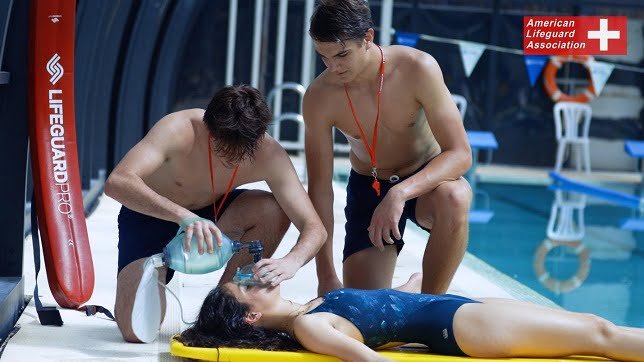Lifeguards are in many cases seen as the first line of safeguard in aquatic environments, whether it’s at the beach, a public pool, or a water park. Their presence gives a sense of safety, yet the genuine extent of their responsibilities goes a long ways past sitting in a high seat, watching swimmers.
A lifeguard’s role is multi-layered, including prevention, security, and emergency response. Understanding these significant responsibilities is essential, particularly for those considering entering the profession or parents looking for affirmation of safety at sporting water spots.
This article digs into the critical responsibilities of a lifeguard, highlighting why their role is so indispensable.
Preventative Measures
One of the essential responsibilities of a lifeguard is prevention. This envelops a great many errands aimed at ensuring the safety of swimmers before any episodes happen. Lifeguards are trained to distinguish expected hazards, for example, solid flows, dangerous pool decks, or packed swimming regions. By perceiving these risks early, they can find proactive ways to alleviate them, like giving alerts, repositioning equipment, or clearing a region.
In addition, lifeguards implement rules and guidelines intended to guard everybody. These rules could appear to be awkward to some, yet they are laid out in view of many years of safety information. For example, disallowing running on a pool deck might appear to be minor, yet it prevents endless slips and falls. A skilled lifeguard knows how to implement these rules really and strategically, ensuring consistence while maintaining a positive environment.
Steady Vigilance and Monitoring
Vigilance is one more foundation of a lifeguard’s responsibilities. A lifeguard should maintain steady consciousness of their environmental factors and the people inside their consideration. This includes watching swimmers as well as effectively checking the water and the region for any difficult situations. Drowning can occur in short order, frequently silently, so it’s vital that lifeguards stay focused and undistracted consistently.
Lifeguards are trained to rapidly distinguish swimmers in trouble. This could be someone battling to remain above water, a swimmer trapped in a tear momentum, or even a youngster meandering excessively near profound water. The capacity to distinguish these circumstances early is basic to preventing them from growing into life-undermining emergencies.
Emergency Response
Regardless of every preventative exertion, emergencies can and do occur. When they do, lifeguards should act quickly and effectively. Their training in lifesaving techniques is scrutinized during these crucial points in time. This incorporates performing water rescues, managing first aid, and directing CPR if fundamental.
Water rescues expect lifeguards to enter the water, arrive at the person in question, and carry them to safety, frequently while fighting troublesome conditions like waves, flows, or overreacted swimmers. Lifeguard classes give broad training in these techniques, furnishing lifeguards with the skills expected to deal with an assortment of rescue situations.
Notwithstanding physical rescues, lifeguards should be prepared to give immediate medical consideration. This could include dealing with minor injuries like cuts or consumes, or settling a casualty until emergency medical administrations show up. Their capacity to keep cool-headed under tension and convey suitable consideration can be the contrast among life and death.
Communication and Teamwork
Lifeguards seldom work alone; they are essential for a more extensive team liable for ensuring safety. Powerful communication and teamwork are essential parts of their role. Lifeguards should have the option to discuss obviously with one another, particularly during emergencies where coordination is urgent.
Moreover, they should have the option to discuss really with the public. This incorporates giving directions to swimmers, making sense of rules, and offering direction on safety precautions. The capacity to pass on data in an unmistakable, definitive, yet cordial way is vital to maintaining a safe and charming environment for everybody.
Ongoing Training and Education
The responsibilities of a lifeguard don’t end with essential certification. Ongoing training and education are essential to maintaining and working on their skills. Lifeguard classes and recertification courses ensure that lifeguards keep awake to-date with the latest techniques and safety conventions. Regular practice drills and reenactments assist with building up these skills, preparing lifeguards for any circumstance they might experience.
For those interested in pursuing a career as a lifeguard, finding ALA best lifeguard classes near me is the first step toward securing the vital training. These classes cover everything from essential water safety to advanced rescue techniques, giving a comprehensive education that furnishes future lifeguards with the skills they need to excel in their role.
Final Word
The role of a lifeguard is both requesting and rewarding, requiring an exceptional mix of vigilance, skill, and dedication. Their responsibilities are pivotal to ensuring the safety and prosperity of swimmers and beachgoers. From preventative measures and steady monitoring to emergency response and compelling communication, lifeguards play a crucial role in aquatic environments. For those hoping to have an effect, enrolling in lifeguard classes is the first step toward joining this crucial profession.
Organizations like the American Lifeguard Association offer comprehensive training programs and certification, ensuring that lifeguards are completely prepared to meet the difficulties of their role. By understanding and appreciating the responsibilities of a lifeguard, we can all contribute to safer, more pleasant water experiences.
Read More: Students and Parents



